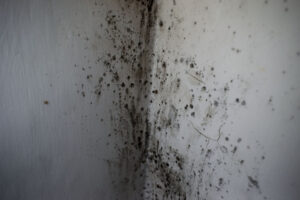Mold is not just a nuisance; it can pose serious health risks and lead to costly damage if not managed properly. Especially in a climate like Chicago’s, where humidity and temperature fluctuations are common, mold prevention is crucial. Luckily, a few simple strategies can keep your home mold-free and ensure a healthy environment for you and your family.

What Mold Needs to Thrive
Mold grows where moisture, warmth, and organic materials meet. Bathrooms, basements, kitchens, and poorly ventilated areas are common hotspots. Preventing mold is about cutting off its lifeline: moisture. Here’s how to tackle it.
1. Reduce Moisture in the Air
Controlling humidity is your first line of defense against mold:
- Install dehumidifiers: Ideal for damp areas like basements or bathrooms.
- Ventilate properly: Use exhaust fans in kitchens and bathrooms to remove steam and moisture.
- Check humidity levels: A hygrometer can help you keep humidity below 50%, the threshold where mold struggles to grow.
2. Fix Water Leaks Quickly
Leaks might seem minor at first, but even small amounts of water can lead to mold:
- Inspect plumbing regularly: Check for leaks under sinks, around toilets, and near water heaters.
- Examine your roof and windows: Address any cracks or gaps that could let water seep in.
- Check your basement and foundation: Look for signs of water intrusion and waterproof if necessary.
3. Keep Surfaces Clean and Dry
Damp surfaces provide the perfect environment for mold to grow. Stay vigilant by:
- Drying spills immediately: Whether it’s water on the floor or condensation on windows, wipe it up as soon as possible.
- Tending to wet clothes and towels: Don’t let damp fabrics linger in the washer or laundry basket.
- Using shower squeegees: Remove water from tiles and glass after each shower to minimize moisture buildup.
4. Improve Air Circulation
Proper airflow helps prevent mold from settling into your home:
- Use fans strategically: Ceiling fans and portable fans can keep air moving in areas prone to dampness.
- Rearrange furniture: Avoid placing large furniture pieces flush against walls to improve ventilation.
- Open windows when possible: Fresh air reduces indoor humidity and prevents stagnant air pockets.
5. Choose Mold-Resistant Materials
If you’re renovating or building, invest in materials that resist mold:
- Mold-resistant drywall and insulation: These products are designed specifically for high-moisture areas.
- Paint with mold inhibitors: Perfect for bathrooms, kitchens, and basements.
- Hard flooring options: Consider tile or vinyl in moisture-prone areas instead of carpets, which retain water.
6. Regularly Inspect Vulnerable Areas
Certain parts of your home are more likely to attract mold. Pay close attention to:
- Bathrooms and kitchens: Clean and dry these areas often, especially around sinks, tubs, and showers.
- Basements and attics: Look for leaks, dampness, or discoloration on walls and ceilings.
- HVAC systems: Mold can grow inside air ducts, so schedule regular maintenance and replace filters often.
7. Maintain Your HVAC System
Your heating and cooling system plays a vital role in keeping mold at bay:
- Replace air filters: Use high-quality filters and change them regularly to reduce airborne mold spores.
- Clean air ducts: Professional air duct cleaning can eliminate mold lurking in your ventilation system.
- Ensure proper drainage: Make sure the HVAC unit’s drainage system is functioning correctly to avoid water buildup.
- Act on Warning Signs
Don’t ignore signs of mold, which may include:
- Musty smells: Persistent odors often signal hidden mold.
- Visible growth: Discoloration on walls, ceilings, or fabrics can indicate an infestation.
- Health symptoms: If you or your family experience unexplained respiratory issues, it’s time to investigate.
9. Get Professional Help
Sometimes, even the most diligent efforts can miss hidden mold. That’s where professional inspections come in. First Choice Inspectors offers certified mold inspections and uses thermography to detect moisture issues that may lead to mold. Early detection prevents small problems from turning into major repairs.
Preventing mold requires consistent effort, but the results are worth it: a healthier home and peace of mind. By keeping humidity under control, maintaining proper ventilation, and acting on potential risks, you can protect your home and your family from the dangers of mold.
If you’re concerned about mold or want a professional inspection, contact First Choice Inspectors today. Call us at 773-429-9711 or email office@firstchoiceinspectors.com to schedule your appointment. Let’s work together to keep your home safe and mold-free!